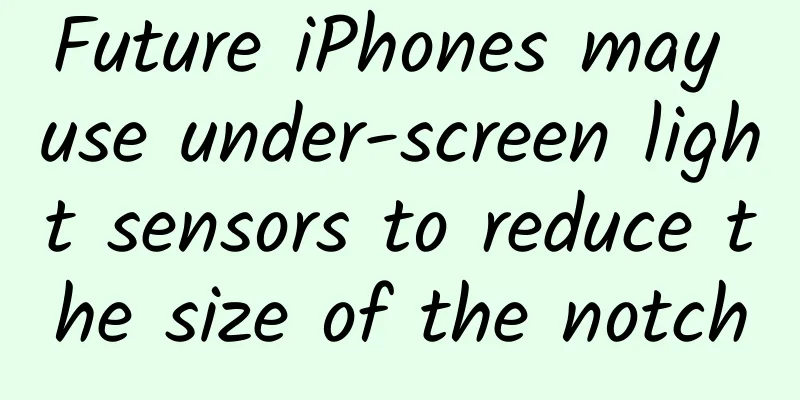Future iPhones may use under-screen light sensors to reduce the size of the notch

|
Apple is working on an ambient light sensor that could be embedded under the iPhone display, a development that could help eliminate or reduce the size of the notch. Current Apple smartphones, like the iPhone 11, include an ambient light display in their notch or top bezel. But a new patent application details a way that Apple could embed a light sensor under the display, likely bringing it one step closer to eliminating the notch altogether. In its patent application, Apple notes that the location of light sensors can be challenging, and if care is not taken, an ambient light sensor could take up more space in an electronic device than intended. In some arrangements, accurately operating an ambient light sensor can be challenging due to potential interference from other components. For example, an ambient light sensor mounted below a display pixel would receive additional light information from the pixel itself, preventing an accurate reading. But Apple notes that an array of pixels mounted above an ambient light sensor can be controlled as the sensor collects measurements. For example, the control circuit can modulate the brightness of an image frame displayed by the pixel array. In one illustrative arrangement, the image frame brightness level is modulated in a repeating sequence. In the repeating sequence, the image frame brightness level can, for example, repeatedly change between a plurality of different levels. By modulating the brightness of a particular image frame, the intensity of stray light from the display screen itself can be modulated. The system can then detect which stray lights are modulated, remove their contribution to the ambient light measurement, and produce a more accurate reading. As a result, the ambient light sensor under the display can better perform its role, such as automatically changing the display brightness or adjusting the color temperature. Apple notes that the system can also be used for other purposes, such as adjusting and compensating for display degradation (such as dead pixels) measured using the sensor. The patent application was first filed in March 2019 and was authorized on September 17, 2020, listing Po-Chieh Hung, Prashanth S. Holenarsipur, and Serhan O. Isikman as inventors. All three have been involved in Apple patents in the past, including patents related to color sampling Apple Pencil models; light sensors; and adjustable Apple Watch bands. Apple is rumored to be working on eliminating or reducing the notch on its flagship smartphones by using sensors and cameras under the display, though there's no firm timeline for when this will happen. |
<<: The disappearance of iPad mini has put the 7-inch tablet market in a bit of an awkward position
>>: iOS welcomes a major update, and apps that secretly collect your information are trembling
Recommend
More than 60 tools for event operation and promotion, a must-have!
To organize a good event, it often goes through t...
Do you know how hard passion fruit works to be eaten by you?!
Recently, eight new passion fruit varieties devel...
The evolution of AI technology is underestimated by the public
ChatGPT, recently launched by OpenAI, has become ...
Insights and marketing strategies for the maternal and infant industry
When those born after 1995 start to become parent...
There has never been an article that explains new customer acquisition, activation, retention, and paid conversion in such detail!
Overview There are four main operational goals: a...
Short video marketing, save these strategies quickly!
In recent years, with the sharp increase in deman...
Attention! Heavy rain + thunderstorm + hail is coming!
Today (June 14), heavy rainfall continues in the ...
Check yourself! Be careful if your fingers have this condition, it may be your heart calling for help...
Reviewer of this article: Yang Shi, Associate Res...
Fitness personal trainer Miao Zhen is content with what he has
Fitness personal trainer Miao Zhen is content and...
23 common senses you must know when operating a public account!
1) About choosing a subscription account or a ser...
Advanced Operations | A new way to control traffic, with 4 cases, 10,000-word collector's edition
As we all know, traffic is a matter of life and d...
Why doesn't the iPhone 7 Plus telephoto lens work in low light?
This year's dual-camera upgrade to the iPhone ...
Baidu bidding account building skills - optimizing keyword matching methods
Baidu bidding account building skills - optimizin...
Advanced content operations: control quality, take advantage of the right time, build a favorable location, and achieve transcendence
Content exists in products in various forms, incl...
Momo Live Personal Anchor Membership Operation Guide
Personal anchor membership operation guide Indivi...









